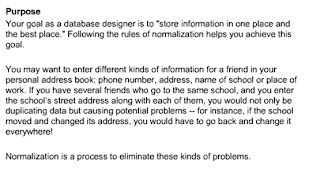Purpose
The unique identifier is the value or combination of values that enables the user to find that one unique item among all the rest. Identifying the right attribute, combination of attributes, and/or relationships is a skill that any database designer must master.
Artificial UIDs are those that don't occur in the natural world but are created for the purposes of identification in a system. For example, people are not born with "numbers," but many systems assign unique numbers to people in order to identify people.
Candidate UIDs
Sometimes there is more than one possible UID. For example, when you order a product from a commercial website, you will usually be assigned a unique customer code and also be asked to enter your e-mail address. Each of these uniquely identifies you, and therefore each could be used as a UID. They are both candidate UIDs.




